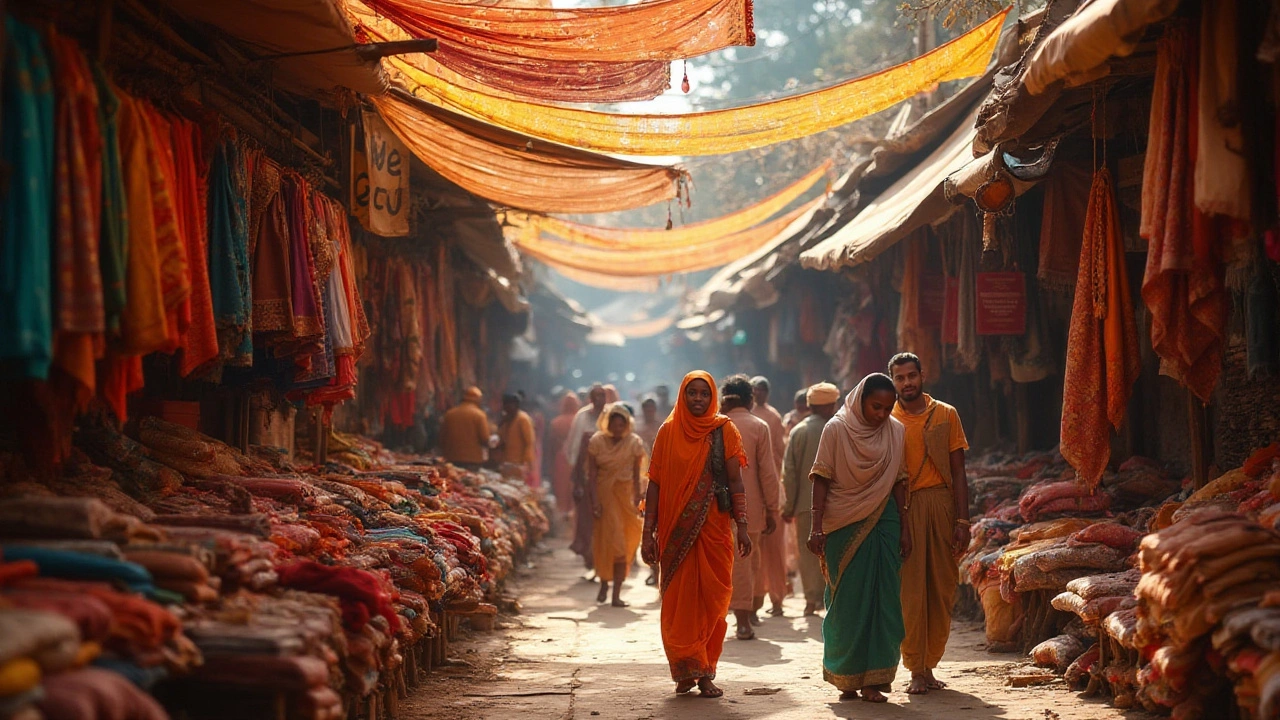Asia's Largest Textile Hub – Surat, India
If you’ve ever wondered where most of Asia’s fabrics come from, the answer lands in Surat, Gujarat. This city pumps out more cotton, synthetic and blended fabrics than any other place on the continent. Its factories line the streets, its markets bustle 24/7, and the export numbers keep climbing year after year.
What Makes Surat the Top Hub?
First off, Surat has been a textile centre for over a century. Generations of family‑run mills grew into high‑tech units that can spin, weave and finish cloth in a single shift. That mix of tradition and modern equipment keeps costs low while quality stays high.
Second, the supply chain here is rock‑solid. Raw cotton arrives from nearby farms, while synthetic polymer reels are imported through the nearby port of Hazira. Because everything is nearby, lead times shrink to a few days instead of weeks.The city also benefits from strong government support. Schemes like the Production‑Linked Incentive (PLI) give cash back to manufacturers who adopt green tech or boost exports. This means newer, energy‑efficient machines are popping up fast.
Finally, the workforce is a big plus. Surat produces a steady stream of skilled textile workers who know the ropes from yarn to garment. Labor rates are competitive compared to other Asian hubs, helping factories keep margins healthy.
Opportunities for Manufacturers and Buyers
For manufacturers, Surat offers a ready‑made network of suppliers, dye houses and logistics partners. If you’re looking to set up a new line, you can tap into existing infrastructure instead of building from scratch. That cuts capital spend by up to 30 percent, according to a recent industry survey.
Buyers get a win‑win too. Because the city produces a wide range of fabrics—plain cotton, denim, polyester blends, and high‑end silk—you can source many materials from a single place. This reduces the hassle of dealing with multiple vendors and streamlines quality checks.
Exporters love Surat’s proximity to major ports. A container from the Surat textile park reaches Shanghai, Dubai or London in less than two weeks. That speed gives Indian brands an edge in fast‑fashion cycles where time to market matters more than ever.
If sustainability is on your checklist, Surat is stepping up. More than 40 percent of factories now recycle water, and a growing number use solar panels to offset electricity costs. Partnering with these eco‑friendly mills can boost your brand’s green credentials.
In short, Surat isn’t just a big factory town—it's a full ecosystem that supports everything from raw material sourcing to finished‑goods export. Whether you’re a startup looking for a low‑cost production base or a global brand needing reliable, high‑volume supply, Surat checks the boxes.
So next time you think about where to get quality fabric at a competitive price, remember the city that has turned cotton into cash for over a hundred years. Surat, Asia’s largest textile hub, is ready to weave your next success story.

Exploring Asia's Largest Textile Hub: India's Thriving Textile Market
Asia's largest textile market, located in India, plays a crucial role in the global textile industry. Known for its rich history and diverse offerings, India's textile industry is a powerhouse of innovation and craftsmanship. From traditional fabrics to modern production techniques, this market offers a vast spectrum of products. With an emphasis on quality and sustainable practices, it continues to dominate the textile landscape in Asia. This article delves into its dynamic nature and influential presence.
Read More